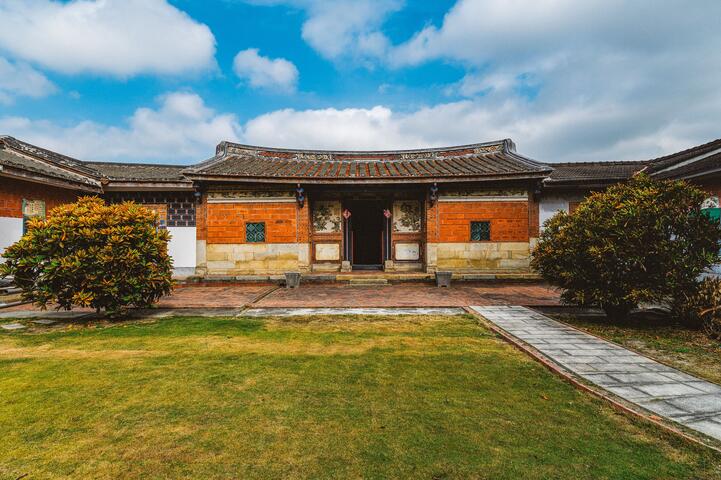Hsiao Yun Villa Introduction
Xiaoyun Villa was built in the fifth year of the Tongzhi era (1866) by Lü Bingnan to support Madame Zhang. At the time of its completion, Lü Bingnan's reputation reached its pinnacle. He had three sons: Ruyu, Ruxiu, and Rucheng, all of whom were scholars acknowledged by the jinshi (the highest degree in the imperial examination) Wu Ziguang, who referred to them as the "Three Phoenixes of Haidong." During the Japanese colonial period, two poets emerged from Xiaoyun Villa: Lü Hou'an and Lü Yunbai, both members of the Wufeng Li society. At that time, as Taiwan fell under Japanese occupation, they energetically promoted poetry education and the Han Chinese historical culture. The Xiaoyun Villa from the Qing Dynasty is structured in a forked dragon style with two sections, designed as a siheyuan (courtyard house) facing south. The entrance hall and gate tower are equipped with gun holes for defense, and both the front and back sections and the gate tower are adorned with various decorations such as Chaozhou ceramics, clay sculptures, brick carvings, paper-cutting, and paintings. The second and third dragon guards of the Duxing Hall are symmetrically placed on both sides of the main house, while the Xiaoyun Pavilion and the Guest Reception Pavilion extend from the left side of the Duxing Hall, forming a scholarly and leisurely world for literati. Xiaoyun Villa contains a rich waterway system and complete defensive facilities. Its architecture spans the Qing Dynasty, the Japanese colonial period, and the Republic of China, cleverly combining characteristics of different cultural styles. This highlights its significant historical and cultural value reflecting the evolution of history, making it a rare example of residential development in Taiwan. Opening hours: Open by appointment every Sunday; please click the reservation link to make an appointment. Source of images and text: Taichung City Government Cultural Assets Department.

























